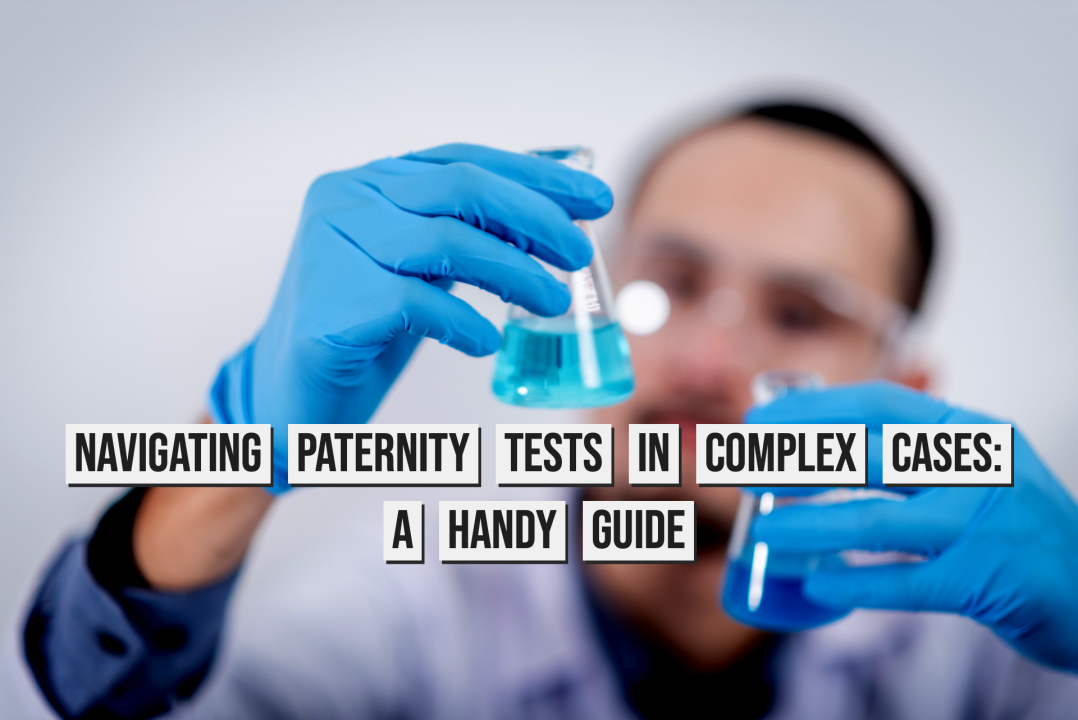In today’s landscape of immigration and paternity disputes, situations can quickly spiral into complexity, involving numerous stakeholders and legal intricacies. Recently, someone I know reached out to me for advice on a similar case. While respecting confidentiality, I realise that these scenarios revolve around three key aspects: the necessity of a paternity test, the presence of an alleged father in immigration detention, and the Home Office’s control over his passport. Following this discussion, I realised perhaps I should write a very short, handy guide for other professionals so that they know how to navigate through such situations.
Paternity Test Providers
Should you require a paternity test to establish a relationship with a child to the Home Office, it remains crucial to engage a testing laboratory accredited with ISO/IEC17025 certification. This certification guarantees the laboratory’s competence and reliability in conducting DNA tests—a fundamental requirement in legal proceedings.
The Home Office Collection Process
DNA Sample Collection
In cases necessitating a paternity test for immigration purposes, the collection of DNA samples holds paramount importance. To maintain the integrity of the process, an independent witness closely oversees the sampling. Typically, this witness is a representative from the testing laboratory who verifies the photographs of individuals contributing DNA samples.
It’s worth noting that the independent witness cannot have any familial ties or serve as the applicant’s representative. Their primary role is to confirm the identities of the involved parties. Additionally, each person undergoing testing must provide facial photographs that meet specified standards or other formats certifiable by the independent witness. The certification should include the statement: “I certify that this is a true likeness of [title and full name of the individual providing a DNA sample.”
You can find more about this in the guidance.
Individuals Whose Identity Documents are Held by the Home Office
In cases where the Home Office retains an individual’s identity documents, volunteers providing a DNA sample must notify the independent witness beforehand. The independent witness is then responsible for documenting the type of document sent to the Home Office, along with the individual’s name, nationality, and date of birth. This information should accompany the DNA test results as part of the DNA evidence.
When the Home Office possesses an individual’s photographic identity document, it will request the testing laboratory to send the certified photograph of the person who provided the DNA sample. Digital images should be submitted via email, including the independent witness’s contact details alongside a statement certifying the image as a true likeness of the person who provided the DNA sample.
Under 16 Individuals
For children under the age of 16, it is generally advisable not to provide DNA samples unless accompanied by an adult capable of providing written consent to the testing laboratory on their behalf. The consenting adult must be the child’s parent, guardian, or someone with parental responsibility. Importantly, this person cannot be an official or a representative of the DNA testing laboratory responsible for collecting or testing the DNA sample.
Sample Collection Procedure
When dealing with samples from individuals in the UK, it remains crucial to adhere to a specific procedure:
In most cases like this almost always the child is not detailed. So in such cases, the sampling kit should be directly sent to the GP responsible for collecting their samples. To streamline this process, collect the following information:
- The GP’s name or, at the very least, the practice manager’s details at the surgery where the family will undergo sample collection.
- The complete postal address and telephone number of the GP surgery.
It’s essential to confirm the GP’s willingness to perform this task and inquire about any associated charges, as these fees are typically separate from the testing costs.
Alternative Sample Collectors: If visiting the GP isn’t a viable option, consider utilizing a network of sample collectors who can visit the donor at their home or a solicitor’s office. Be mindful that fees for this service vary depending on the collector’s travel and time commitments.
Sample Collection from Detention Centers
In situations where an individual in need of a DNA test is in immigration detention, specialized procedures may apply. Initially, you should get in touch with testing laboratories, providing them with detention centre details. They should confirm if they can dispatch a representative to that specific location and provide you with the timeline. At this stage, you can issue instructions while also promptly notifying the Home Office and the relevant detention centre. Explicitly request that the detainee should not be transferred to another facility before the testing occurs. If relocation is already scheduled, share the details with the testing laboratory to adjust your instructions. This seemingly simple step holds significance, as it can serve as crucial evidence in case of a removal order dispute.
Additionally, instruct the testing laboratory to inform you once the sample has been gathered and maintain a record of this correspondence. Given that the detainee may not have possession of their passport, explicitly request the testing laboratory to take photographs of the individual providing the DNA sample. Digital images should be submitted by email, including the independent witness’s contact details alongside a statement certifying the image as a true likeness of the person who provided the DNA sample.
Once the sample is collected, it undergoes cross-checking against the baby’s sample, and the results are provided.
It remains imperative to retain an email trail documenting correspondence with both the testing laboratory and the Home Office.
Conclusion
In the realm of immigration and intricate legal cases, paternity tests require meticulous attention to detail and strict adherence to established protocols. This guide stands as a valuable resource for professionals confronted with such complex challenges, offering clarity on essential steps and requirements for navigating these intricate scenarios effectively. By following these contemporary guidelines lawyers can uphold the process’s integrity and ensure the reliability of results, ultimately contributing to fair and just outcomes in these multifaceted cases.
#PaternityTests #Immigration #LegalMatters #DNAEvidence #Detention



